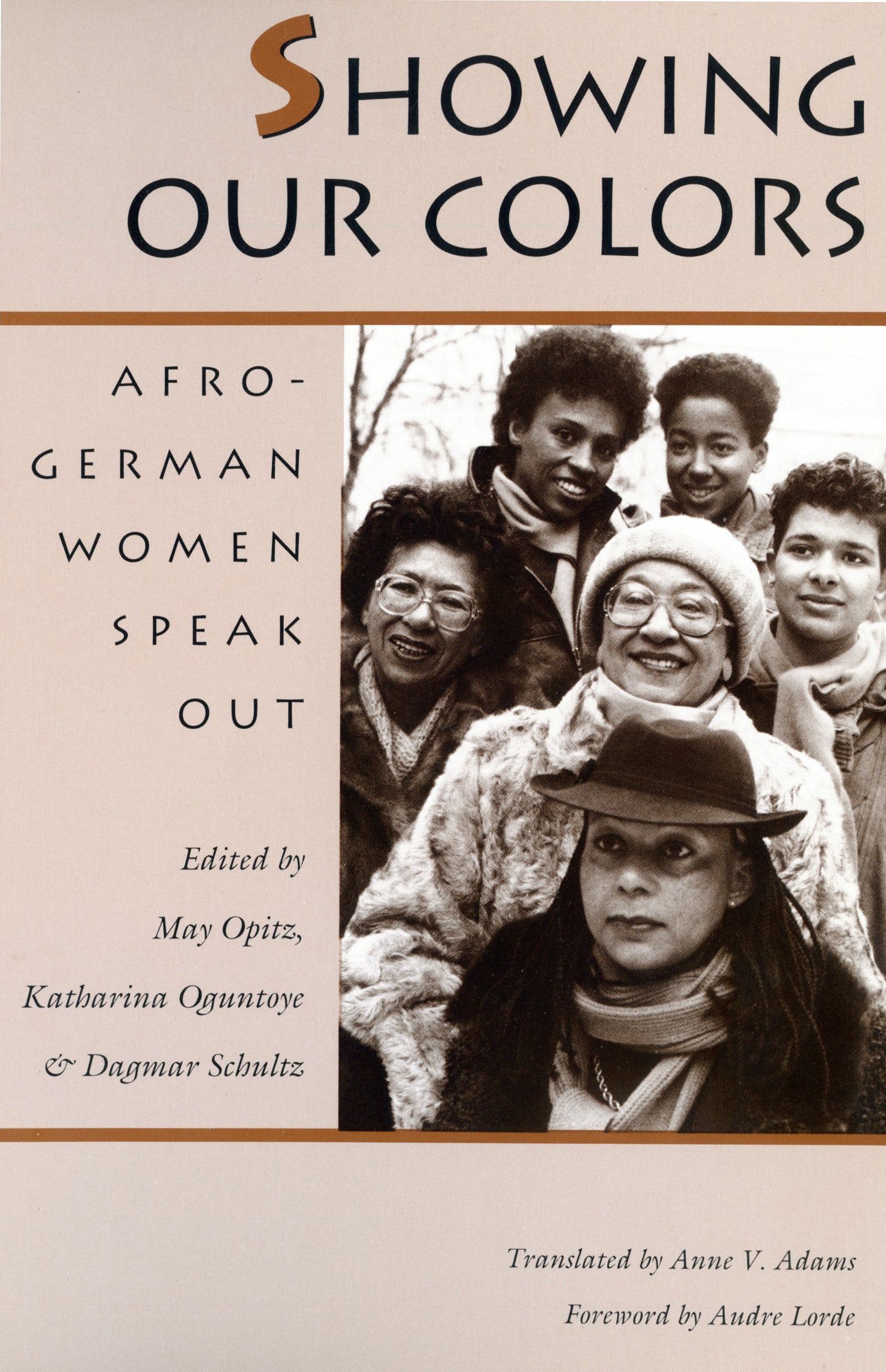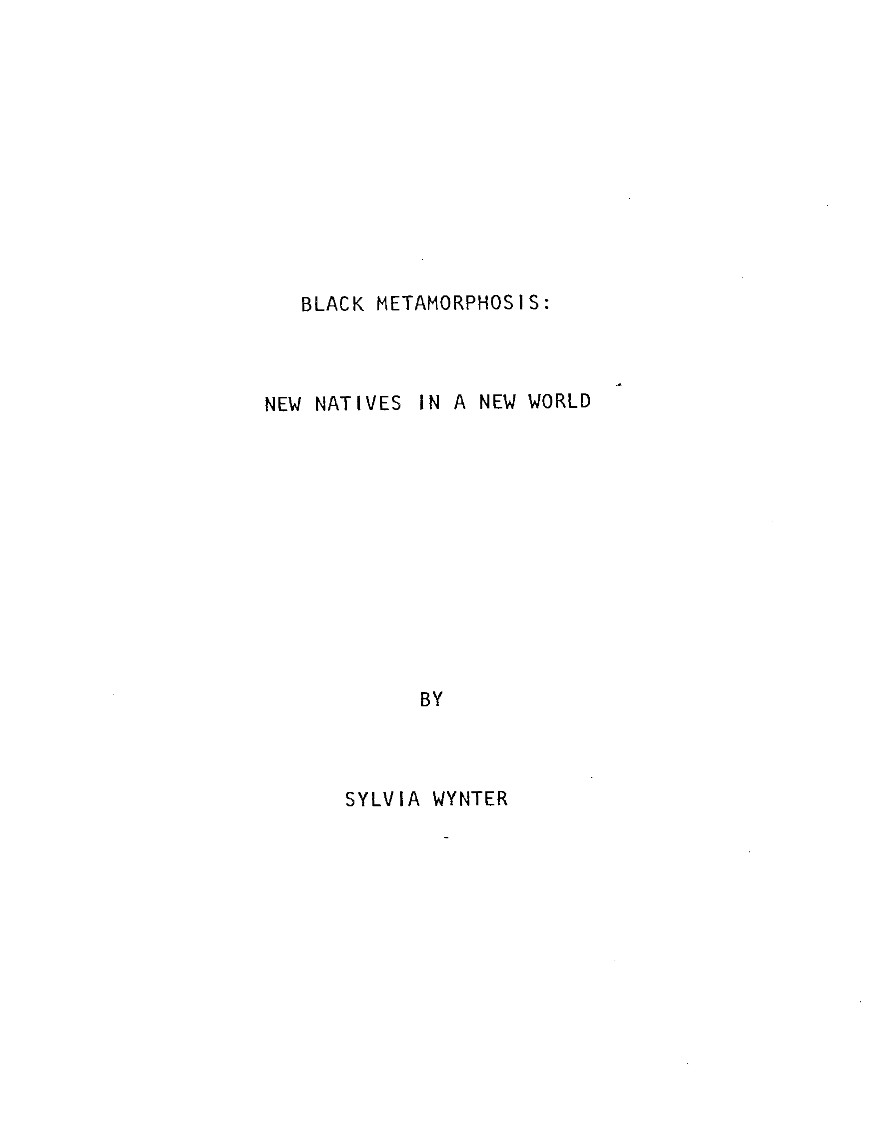May Opitz, Katharina Oguntoye, Dagmar Schultz (eds.): Showing Our Colors: Afro-German Women Speak Out (1991)
Filed under book | Tags: · black people, colonialism, feminism, germany, history, race, racism, sexism, women

“ISD (Initiative Schwarze Menschen in Deutschland), ADEFRA (Schwarze Frauen in Deutschland), Neuen Schwarzen Bewegung, all began in the 1980s in Berlin, centred around Freie Universität where Dagmar Schultz was professor. She invited Audre Lorde as a visiting professor from 1984, where May Opitz (from 1992 May Ayim) and Katharina Oguntoye attended her seminars. Out of this came Black History Month in Germany in 1991, and Farbe bekennen: Afro-deutsche Frauen auf den Spuren ihrer Geschichte, published in 1986.” (Source)
First published in German as Farbe bekennen: afro-deutsche Frauen auf den Spuren ihrer Geschichte, Orlanda Frauenverlag, Berlin, 1986.
English edition
Foreword by Audre Lorde
Translated by Anne V. Adams
Publisher University of Massachusetts Press, Amherst, MA, 1991
ISBN 0870237594, 9780870237591
xxv+239 pages
Reviews: Amina Mama (Feminist Review, 1993), Leslie Morris (German Quarterly, 1994), George Junne (Explorations in Sights and Sounds, 1993), Laura Freisberg (BR, 2020, DE).
Publisher (new ed., 2020, DE)
Publisher (EN)
Wikipedia
WorldCat
Sylvia Wynter: Black Metamorphosis: New Natives in a New World [1970s]
Filed under manuscript | Tags: · black people, body, caribbean, colonialism, critique, human, humanism, politics, resistance, slavery, theory

“Black Metamorphosis: New Natives in a New World is an unpublished manuscript written by Sylvia Wynter. The work is a seminal piece in Black Studies and uses diverse fields to explain Black experiences and presence in the Americas.
Throughout the 1970s and early 1980s, Wynter worked with the Center for Afro-American Studies (CAAS) at the University of California, Los Angeles (UCLA) to complete the project which was to be published by the Institute of the Black World. The manuscript presents early iterations of Wynter’s Theory of the Human and explores how Black experiences are essential to understanding the history of the New World.”
The only part of this manuscript that has been published is Wynter’s 1979 essay “Sambos and Minstrels”, though excerpts of and allusions to many of the other texts she wrote in the 1970s can be found in the manuscript, particularly “Jonkonnu in Jamaica” (1970), “Novel and History” (1971), “Ethno or Socio Poetics” (1976), “The Politics of Black Culture” (1977), and “In Quest of Matthew Bondman” (1981). … In the final 935-page manuscript, the page numbers break at page 251 and resume with page 370. The 120 missing pages correspond exactly to the number of pages in a series of descriptions of revolts by enslaved persons in Jamaica, and it appears that they were meant to be inserted at this point in the text.” (Kamugisha 2016)
Manuscript, written throughout the 1970s
[935] pages (252-369 missing)
Commentary and analysis: Derrick White (C.L.R. James Journal, 2010), Aaron Kamugisha, Demetrius L. Eudell, Greg Thomas, Katherine McKittrick, Tonya Haynes, Nijah Cunningham (Small Axe, 2016).
PDF (21 MB)
Comment (0)DJ Lynnée Denise: Toni Morrison Inna London: Sonic Connections and the Literary Imagination (2020)
Filed under music video, video | Tags: · black people, djing, literature, women
“In this work, DJ Lynnée Denise offers a layered audio-visual response to the 1986 Guardian talk with Toni Morrison at the ICA. The visual essay brings together intimate reflections and propositions framed by Morrison’s 1992 novel Jazz. DJ Lynnée Denise explores the Black Atlantic sound, visuals and craft to render the life worlds behind Morrison’s oeuvre visible. Morrison’s writing is expanded into a visual vocabulary in which transatlantic conversations and new connections emerge. A praxis in translation.
Claudia Jones. Eartha Kitt. Fannie Lou Hamer. Lorraine Hansberry. Winnie Mandela. Sarah Vaughn. Lady G. Sister Rosetta Tharpe. Elizabeth Cotton. Augusta Savage. Judy Mowatt.
DJ Lynnée Denise creates what Louis Chude Sokei calls a diasporic “echo chamber” of Black women’s craft animated by the bricolage of drum and bass in which the sonic influences of Black Britain and Black America are an electronic undercurrent. The drum machine mixed with Morrison’s gestures, mannerisms, and reading speak to how Morrison’s is experienced through a multi-sensory engagement.
In Morrison’s interview with A.S. Byatt, she references the important inspiration of paintings in her writing practice and the relationship between musicians and their audience. In this work, a visual remixing of worlds happens in which Black girls jumping rope, everyday live in Harlem, the market space in Brixton are the aesthetics to Morrison’s writing or in her words “the access to the scene”. In DJ Lynnée Denise’s rendering, “the scene” is about Black wayward diasporic women whose craft is read through astrology, the politics of refusal and the secrets of Black social life.”
Publisher Institute of Contemporary Arts, London, March 2020
28 minutes
via ICA’s Five Volumes for Toni Morrison, HT dubravka
Interview with author: Chandra Frank (Journal of Popular Music Studies, 2020).
MP4 (218 MB)
Comment (0)
